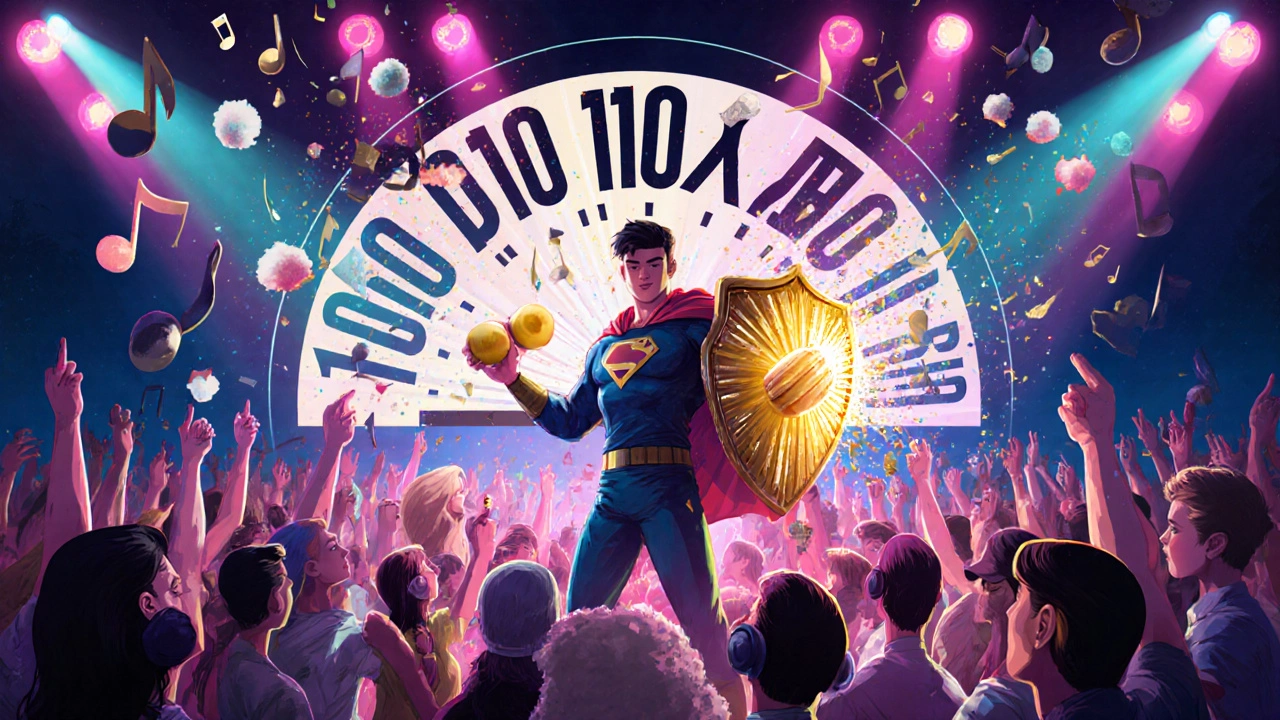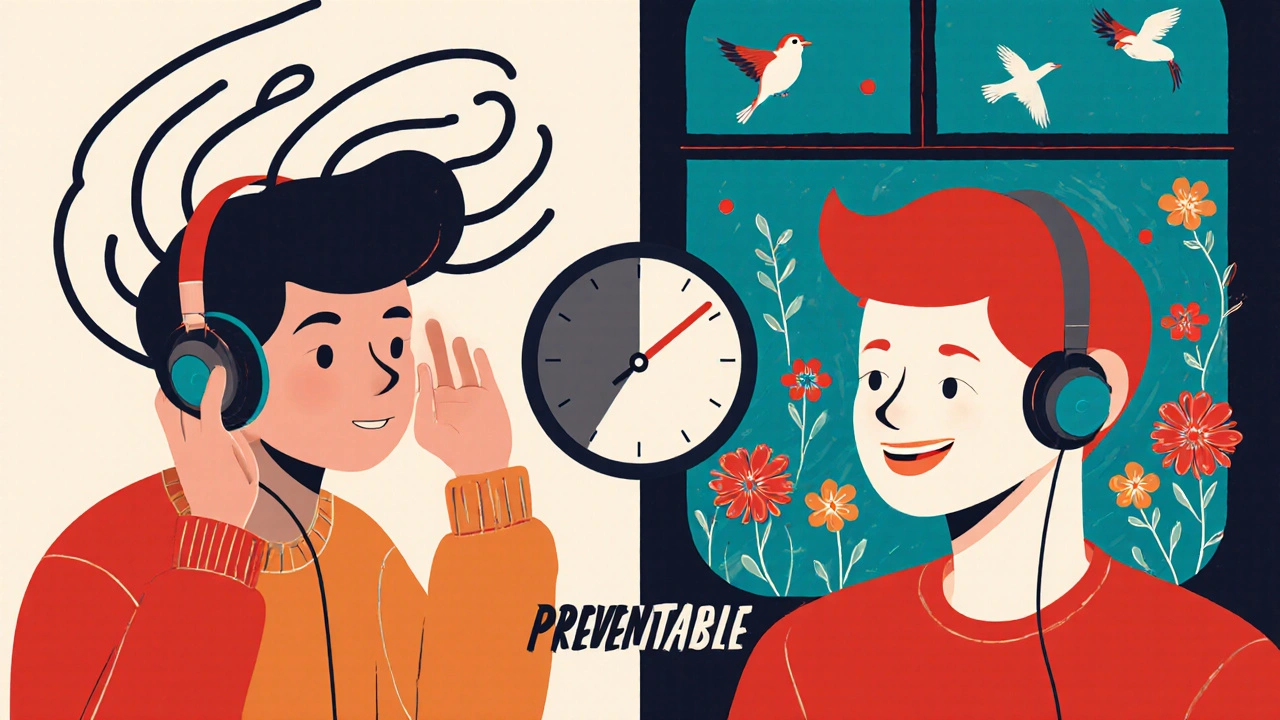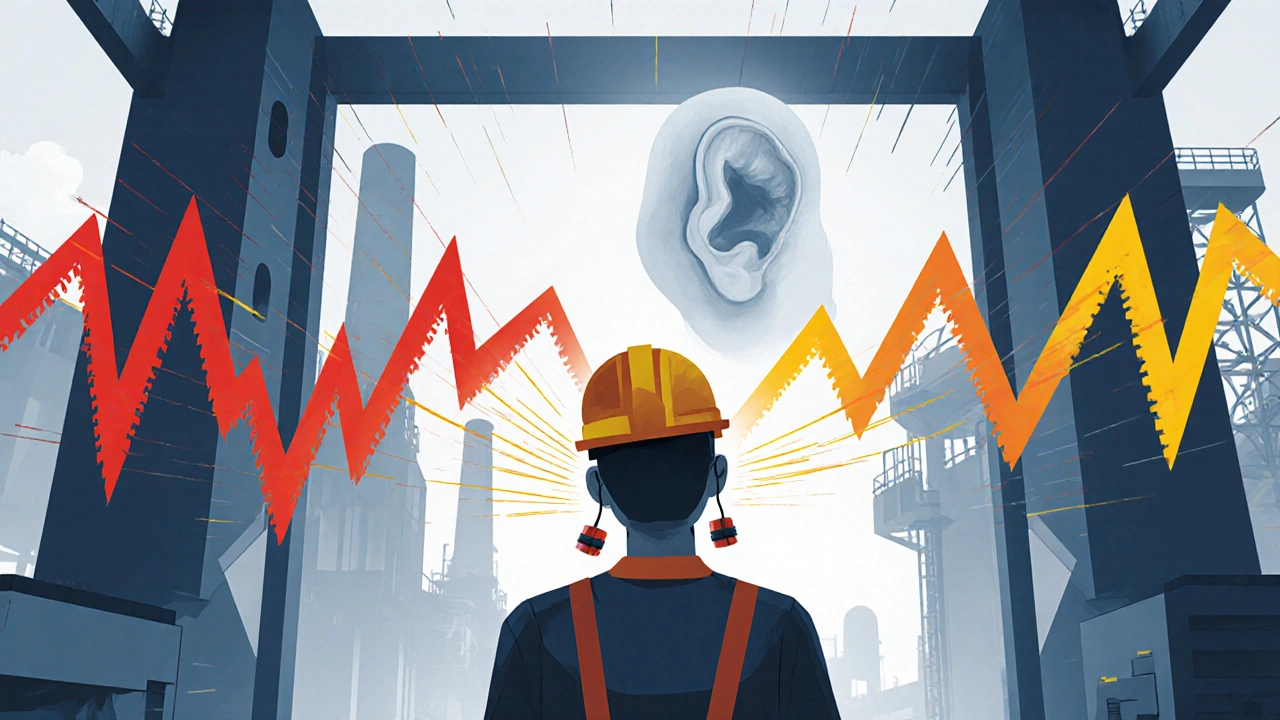Every day, millions of people are exposed to sounds that can permanently damage their hearing - and most don’t even realize it’s happening. At work, the roar of machinery, the clatter of tools, or the hum of ventilation systems might seem normal. At concerts, the bass thumps through your chest, and you shout to be heard over the music. But these aren’t just loud moments - they’re noise exposure limits being crossed, and each time it happens, your ears pay a silent price.
What Counts as Dangerous Noise?
Noise isn’t just about how loud something sounds. It’s about how long you’re exposed to it and how much energy it carries. The key threshold is 85 decibels (dBA), measured over an 8-hour workday. That’s about the level of heavy city traffic or a lawnmower running nearby. If you’re exposed to 85 dBA for 8 hours straight, your risk of permanent hearing loss starts to climb. And here’s the catch: every 3-decibel increase cuts your safe exposure time in half. At 88 dBA, you’ve got 4 hours. At 91 dBA, just 2 hours. At 100 dBA - common at rock concerts or near power tools - you’re only safe for 15 minutes before damage becomes likely.Why There Are Two Different Rules for Noise
You might wonder why some places say 85 dBA is dangerous while others say 90 dBA is okay. That’s because there are two sets of standards: one based on science, and one based on law. The National Institute for Occupational Safety and Health (NIOSH) recommends 85 dBA as the maximum safe exposure over 8 hours. They use a 3-dB exchange rate, meaning noise levels that go up by 3 dB cut your safe time in half. This is backed by decades of research showing hearing damage starts well before 90 dBA. The Occupational Safety and Health Administration (OSHA) sets the legal limit at 90 dBA for 8 hours, using a slower 5-dB exchange rate. That means at 100 dBA, OSHA still allows 2 hours of exposure - even though NIOSH says it should be just 15 minutes. The difference? NIOSH wants to prevent 92% of hearing loss. OSHA’s rules allow up to 25% of workers to develop hearing damage over a lifetime. In Australia, Safe Work Australia follows the NIOSH standard: 85 dBA over 8 hours, with a peak limit of 140 dB(C). The European Union is even stricter, setting action levels at 80 dBA and upper limits at 87 dBA - even after accounting for ear protection. And in places like California, state law already matches NIOSH’s stricter guidelines.How Noise Damages Your Ears
Your inner ear has tiny hair cells that convert sound waves into signals your brain understands. These cells don’t grow back. Once they’re damaged by loud noise, the hearing loss is permanent. It doesn’t happen overnight. It builds up over years - maybe you don’t notice until you can’t hear your kids clearly, or you’re always asking people to repeat themselves. Studies show workers exposed to 85-90 dBA for 20 years have measurable hearing loss at key frequencies - especially 3,000 to 4,000 Hz, where speech clarity lives. That’s why you might understand someone talking in a quiet room but struggle in a restaurant or group setting. It’s not your brain - it’s your ears. Even recreational noise adds up. A 2-hour concert at 110 dBA gives you the same noise dose as a full 8-hour shift in a factory. And if you’re using headphones at high volume for hours after, you’re doubling down on damage. The World Health Organization recommends limiting personal audio use to 40 hours per week at or below 80 dBA - the equivalent of listening to music at about half the maximum volume on most phones.
What Employers Must Do (And What They Often Don’t)
By law, if noise at work hits 85 dBA, employers in the U.S. must start a hearing conservation program. That includes:- Free hearing tests (baseline and yearly)
- Noise monitoring
- Training on how to use ear protection
- Providing hearing protection devices (HPDs)
Concerts Aren’t Safe Just Because They’re Fun
You don’t need a hard hat to be at risk at a concert - but you do need earplugs. Most music venues don’t measure noise levels. That’s changing. Some festivals now have real-time sound displays showing decibel readings. Others hand out free, high-fidelity earplugs that reduce volume without muffling music. At the Lifehouse Festival, 75% of attendees took them - and many came back for more. The problem? A 2022 survey found 63% of professional musicians have some degree of hearing loss. Orchestral musicians are exposed to 89-94 dBA during performances - that’s like standing next to a chainsaw for hours. And fans? A single night at a loud concert can cause temporary hearing loss that never fully recovers. The good news? You can protect yourself. Look for venues that offer hearing protection. Use smartphone apps that measure noise levels - research shows they’re 92% accurate compared to professional gear. And if you’re at a concert, wear earplugs. They’re not for nerds - they’re for people who want to hear their favorite songs clearly for decades to come.
What You Can Do Right Now
You don’t need to wait for a policy change to protect your hearing. Here’s what works:- At work: Ask if your employer has a hearing conservation program. If they don’t, request one. You have the right to know your noise exposure.
- At concerts: Bring your own high-fidelity earplugs. They cost under $20 and last years. Don’t wait until you can’t hear your friend talking.
- On headphones: Use the built-in volume limits on your phone. Apple and Spotify now warn you when you hit 85 dBA equivalent. Heed them.
- At home: If you’re using power tools, lawnmowers, or leaf blowers, wear protection. Even 30 minutes can add up.
The Bigger Picture: Hearing Loss Is Preventable
About 24% of hearing loss in the U.S. is caused by noise - and nearly all of it is 100% preventable. The cost? Over $1 billion a year in workers’ compensation claims. The human cost? Lost conversations, isolation, anxiety, and a life where sound fades slowly. By 2040, if every workplace and entertainment venue adopted the 85 dBA standard, we could prevent 240,000 cases of hearing loss every year in the U.S. alone. That’s not science fiction. It’s a simple choice: protect hearing now, or pay for it later. It’s not about being overly cautious. It’s about being smart. Your ears don’t have a reset button. Once they’re damaged, the sound is gone for good. Don’t wait until you can’t hear the birds outside your window, or your child’s laugh - because you won’t be able to turn it back on.What is the safe noise level for an 8-hour workday?
The scientifically recommended safe level is 85 decibels (dBA) averaged over 8 hours, according to NIOSH and Safe Work Australia. OSHA’s legal limit is higher at 90 dBA, but this allows for a much greater risk of hearing loss. For every 3 dB increase above 85 dBA, safe exposure time is cut in half - so at 88 dBA, you’re only safe for 4 hours, and at 100 dBA, just 15 minutes.
Are earplugs effective at concerts?
Yes - but not all earplugs are created equal. Foam plugs reduce volume but muffle music. High-fidelity earplugs, designed for musicians and concertgoers, lower sound evenly across frequencies so you still hear the music clearly, just at a safer level. They reduce noise by 15-25 dB and are widely available at music stores and festivals. Many venues now offer them for free.
Can smartphone apps measure noise accurately?
Yes. Research published in JAMA Otolaryngology in June 2023 found that smartphone apps can measure environmental noise with 92% accuracy compared to professional sound level meters. Apps like NIOSH’s Sound Level Meter or Decibel X are reliable tools to check if your environment exceeds 85 dBA. They’re especially useful for checking headphone volume or concert noise levels.
Why does OSHA allow 90 dBA if it’s riskier than 85 dBA?
OSHA’s 90 dBA limit was set decades ago based on economic and enforcement feasibility, not medical evidence. The 5-dB exchange rate OSHA uses underestimates the risk at higher noise levels - by as much as 700% according to the American College of Occupational and Environmental Medicine. NIOSH, the CDC, and most global health agencies agree that 85 dBA is the scientifically correct threshold. Many states, including California, have already adopted the stricter standard.
How do I know if I’m losing my hearing?
Early signs include difficulty understanding speech in noisy places, ringing in your ears (tinnitus), or feeling like people are mumbling. You might find yourself turning up the TV or asking others to repeat themselves. These are signs of noise-induced hearing loss, often starting in the 3,000-4,000 Hz range. If you notice these symptoms, get a hearing test - especially if you work in a noisy environment or go to loud concerts regularly.
Is hearing loss from noise reversible?
No. Once the hair cells in your inner ear are damaged by loud noise, they don’t regenerate. The hearing loss is permanent. What’s often mistaken for recovery - like temporary muffled hearing after a concert - is actually a warning sign called a temporary threshold shift. If it happens repeatedly, it becomes permanent. Prevention is the only cure.
What are the most dangerous noise sources at work?
The highest-risk jobs include manufacturing (35% of cases), construction (22%), and mining (18%), according to the Bureau of Labor Statistics. Common sources: jackhammers (110-120 dBA), chainsaws (110 dBA), power drills (95-110 dBA), and industrial fans or compressors (90-100 dBA). Even lawn mowers and leaf blowers (90-100 dBA) can cause damage with prolonged use. If you’re exposed to these for more than a few hours a week, hearing protection is essential.

